Showing Spotlights 129 - 136 of 200 in category All (newest first):
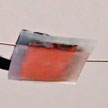 By miniaturizing microbial fuel cells, it becomes possible to build miniature energy harvesters that could power lab-on-chip or point-of-care diagnostics devices independent of any external power source. Because micro-sized microbial fuel cells utilize less electrode area and less liquid fuel volume than their macro-sized counterparts, optimizing the electrodes and the fuel sources are the most important factors in designing a micro-sized MFC for maximum power production.
By miniaturizing microbial fuel cells, it becomes possible to build miniature energy harvesters that could power lab-on-chip or point-of-care diagnostics devices independent of any external power source. Because micro-sized microbial fuel cells utilize less electrode area and less liquid fuel volume than their macro-sized counterparts, optimizing the electrodes and the fuel sources are the most important factors in designing a micro-sized MFC for maximum power production.
Mar 24th, 2014
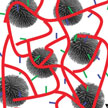 If you ever had problems with the (non-removable) battery in your iPhone or iPad then you well know that the energy storage or power source is a key component in a tightly integrated electronic device. Any damage to the power source will usually result in the breakdown of the entire device, generating at best inconvenience and cost and in the worst case a safety hazard and your latest contribution to the mountains of electronic waste. A solution to this problem might now be at hand thanks to researchers in Singapore who have successfully fabricated the first mechanically and electrically self-healing supercapacitor.
If you ever had problems with the (non-removable) battery in your iPhone or iPad then you well know that the energy storage or power source is a key component in a tightly integrated electronic device. Any damage to the power source will usually result in the breakdown of the entire device, generating at best inconvenience and cost and in the worst case a safety hazard and your latest contribution to the mountains of electronic waste. A solution to this problem might now be at hand thanks to researchers in Singapore who have successfully fabricated the first mechanically and electrically self-healing supercapacitor.
Mar 10th, 2014
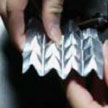 In order to fabricate entirely flexible electronic devices, the components that power them - such as batteries - not only need to be fully flexible as well but they have to be compatible with commercially available manufacturing technologies. This would require achieving a high degree of deformability without using elastomeric materials. Researchers have now demonstrated the fabrication of a highly deformable lithium-ion battery using standard electrodes and commercially standard packaging technologies.
In order to fabricate entirely flexible electronic devices, the components that power them - such as batteries - not only need to be fully flexible as well but they have to be compatible with commercially available manufacturing technologies. This would require achieving a high degree of deformability without using elastomeric materials. Researchers have now demonstrated the fabrication of a highly deformable lithium-ion battery using standard electrodes and commercially standard packaging technologies.
Feb 7th, 2014
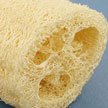 In microbial fuell cells, the anode material as the medium of electron transfer and as the support for biofilm formation is a key component that determines the effectiveness and efficiency of power generation. Generally, the anode will perform better if the anode material has a greater specific surface area and higher affinity for living bacterial cells. The direct carbonization of low-cost and naturally available materials provides a potential alternative to commercial anodes with high specific surface area. In new work, scientists demonstrate a new procedure to generate novel macroporous carbon prepared from a fibrous loofah sponge.
In microbial fuell cells, the anode material as the medium of electron transfer and as the support for biofilm formation is a key component that determines the effectiveness and efficiency of power generation. Generally, the anode will perform better if the anode material has a greater specific surface area and higher affinity for living bacterial cells. The direct carbonization of low-cost and naturally available materials provides a potential alternative to commercial anodes with high specific surface area. In new work, scientists demonstrate a new procedure to generate novel macroporous carbon prepared from a fibrous loofah sponge.
Dec 17th, 2013
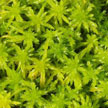 Researchers in Canada have demonstrated that it is possible to achieve graphite-like charge/discharge behavior in a sodium ion battery anodes through a controlled dilation of the intergraphene spacing in a tailored carbon. They utilized common peat moss as the carbon precursor, tuning the synthesis process to create macroscopically open nanoscale pseudographitic structures that also offers a unique high rate capability and superb charge-discharge cycling stability.
Researchers in Canada have demonstrated that it is possible to achieve graphite-like charge/discharge behavior in a sodium ion battery anodes through a controlled dilation of the intergraphene spacing in a tailored carbon. They utilized common peat moss as the carbon precursor, tuning the synthesis process to create macroscopically open nanoscale pseudographitic structures that also offers a unique high rate capability and superb charge-discharge cycling stability.
Dec 10th, 2013
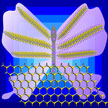 As researchers continue to develop the use of graphene in energy storage devices, other two-dimensional (2D) inorganic materials like 2D transition metal disulfides have attracted extensive scientific attention. Vanadium disulfide few-layered nanosheets have been recently achieved experimentally, and in new work, scientists systematically investigated the adsorption and diffusion of lithium on the recently synthesized vanadium disulfide monolayer in comparison with MoS2 monolayer and graphite.
As researchers continue to develop the use of graphene in energy storage devices, other two-dimensional (2D) inorganic materials like 2D transition metal disulfides have attracted extensive scientific attention. Vanadium disulfide few-layered nanosheets have been recently achieved experimentally, and in new work, scientists systematically investigated the adsorption and diffusion of lithium on the recently synthesized vanadium disulfide monolayer in comparison with MoS2 monolayer and graphite.
Dec 3rd, 2013
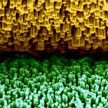 There is an almost infinite number of mechanical energy sources all around us - basically, anything that moves can be harvested for energy. These environmental energy sources can the very large, like wave power in the oceans, or very small, like rain drops or biomechanical energy from heart beat, breathing, and blood flow. With the increasing use of nanotechnology materials and applications in energy research, scientists are finding more and more ways to tap into these pretty much limitless sources of energy. Self-powered nanotechnology based on piezoelectric nanogenerators aims at powering nanodevices and nanosystems using the energy harvested from the environment in which these systems are suppose to operate.
There is an almost infinite number of mechanical energy sources all around us - basically, anything that moves can be harvested for energy. These environmental energy sources can the very large, like wave power in the oceans, or very small, like rain drops or biomechanical energy from heart beat, breathing, and blood flow. With the increasing use of nanotechnology materials and applications in energy research, scientists are finding more and more ways to tap into these pretty much limitless sources of energy. Self-powered nanotechnology based on piezoelectric nanogenerators aims at powering nanodevices and nanosystems using the energy harvested from the environment in which these systems are suppose to operate.
Nov 19th, 2013
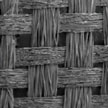 Going hand in hand with the development of wearable electronic textiles, researchers are also pushing the development of wearable and flexible energy storage to power those e-textiles. Researchers have now developed wearable textile batteries that can be integrated with flexible solar cells and thus be recharged by solar energy. The team found unconventional materials for all of the key battery components and integrated them into a fully wearable battery.
Going hand in hand with the development of wearable electronic textiles, researchers are also pushing the development of wearable and flexible energy storage to power those e-textiles. Researchers have now developed wearable textile batteries that can be integrated with flexible solar cells and thus be recharged by solar energy. The team found unconventional materials for all of the key battery components and integrated them into a fully wearable battery.
Nov 8th, 2013
 By miniaturizing microbial fuel cells, it becomes possible to build miniature energy harvesters that could power lab-on-chip or point-of-care diagnostics devices independent of any external power source. Because micro-sized microbial fuel cells utilize less electrode area and less liquid fuel volume than their macro-sized counterparts, optimizing the electrodes and the fuel sources are the most important factors in designing a micro-sized MFC for maximum power production.
By miniaturizing microbial fuel cells, it becomes possible to build miniature energy harvesters that could power lab-on-chip or point-of-care diagnostics devices independent of any external power source. Because micro-sized microbial fuel cells utilize less electrode area and less liquid fuel volume than their macro-sized counterparts, optimizing the electrodes and the fuel sources are the most important factors in designing a micro-sized MFC for maximum power production.
 Subscribe to our Nanotechnology Spotlight feed
Subscribe to our Nanotechnology Spotlight feed





